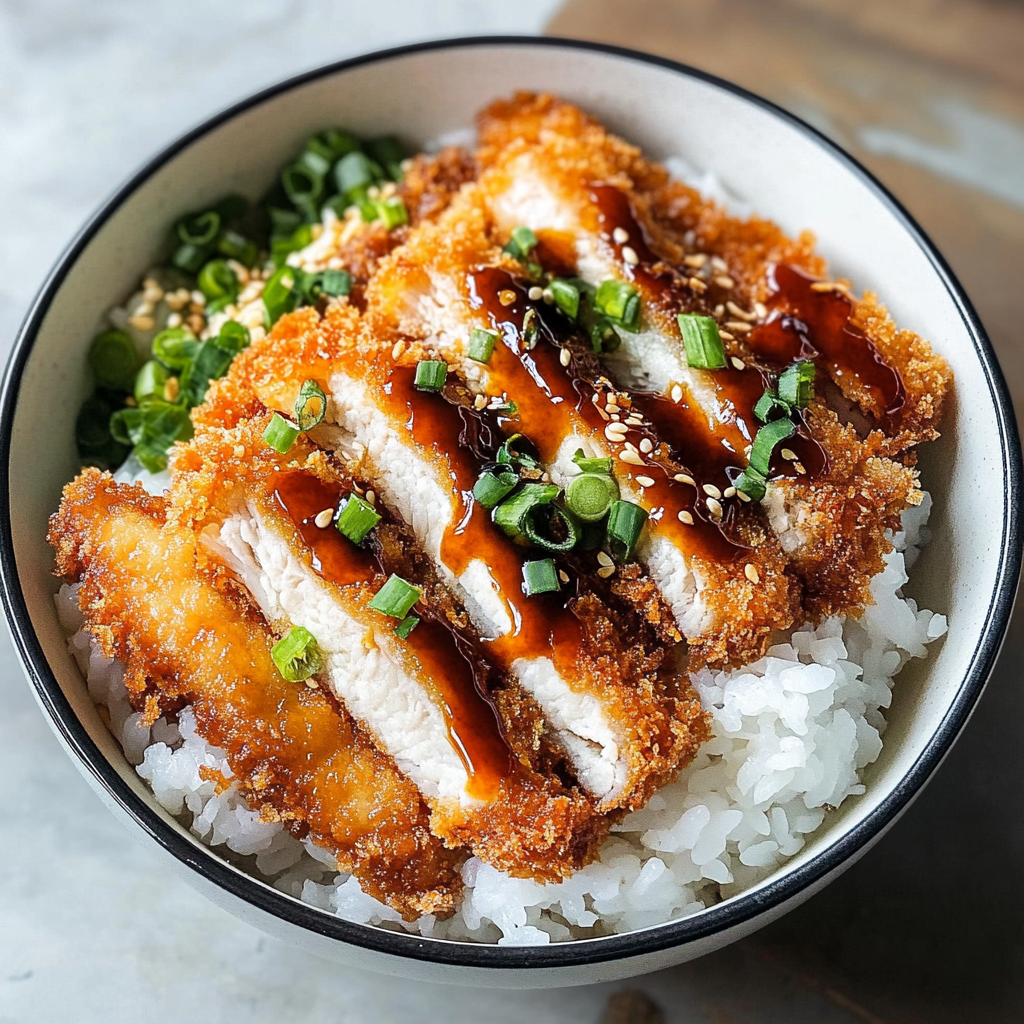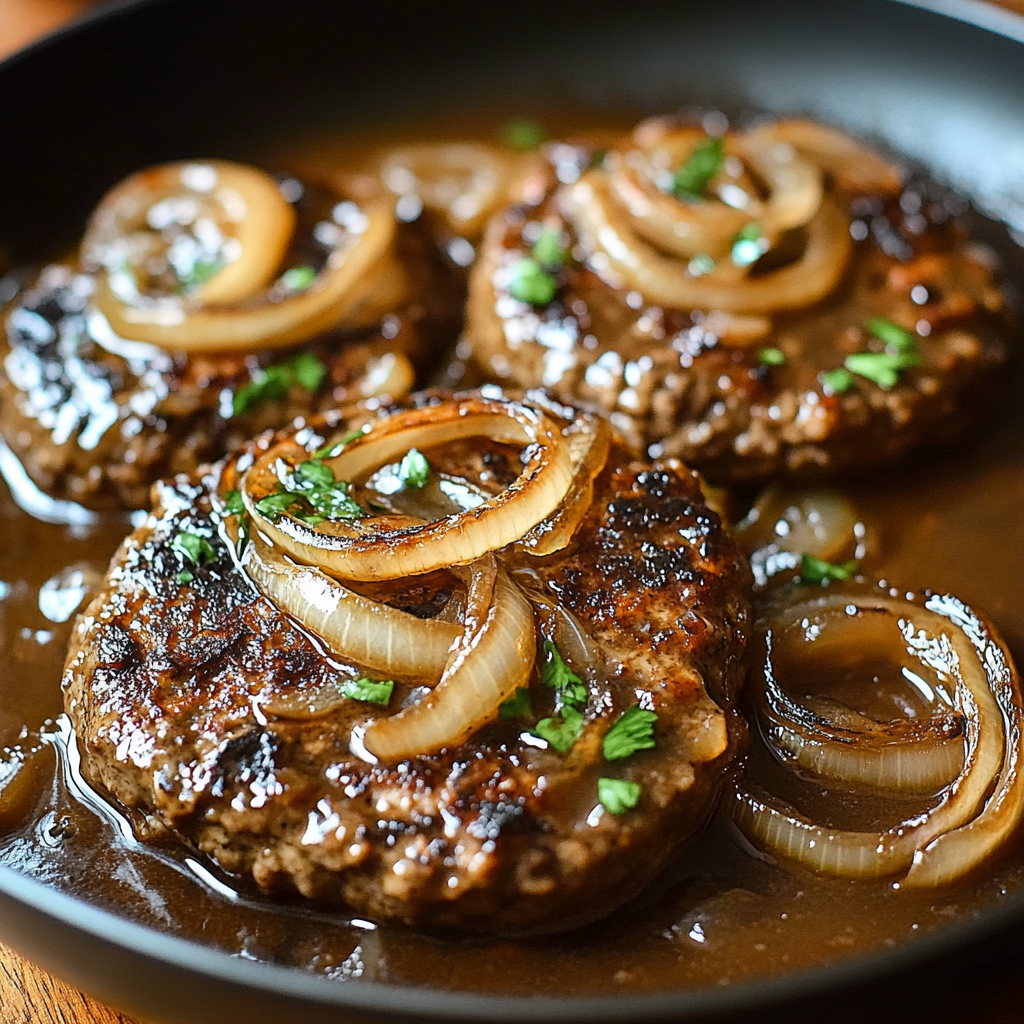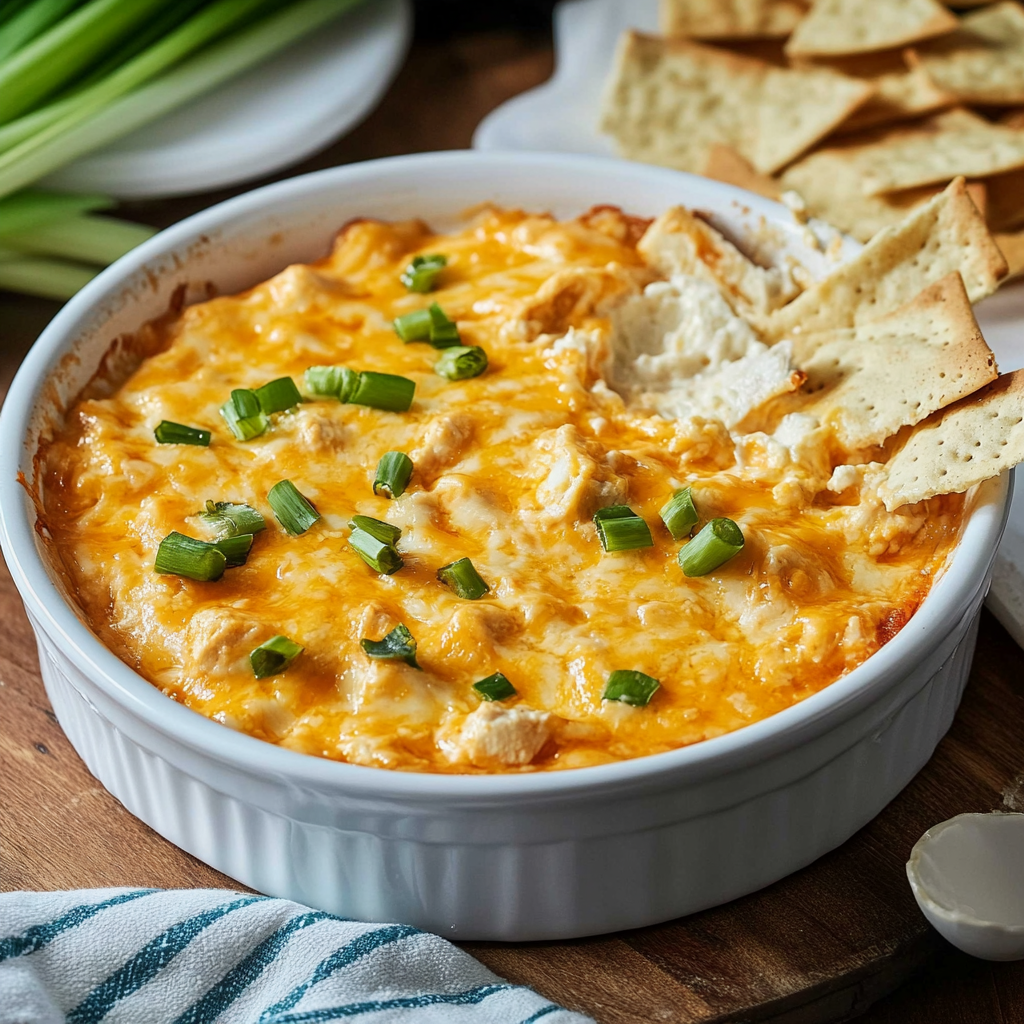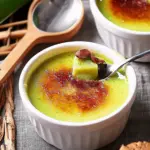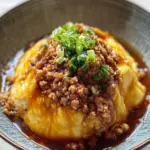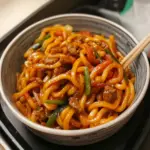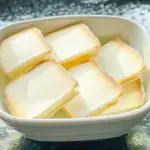The satisfying crunch of perfectly fried chicken katsu paired with the bold, umami-rich tonkatsu sauce is what makes this Japanese Katsu Bowl an absolute comfort classic. Paired with fluffy rice and crisp fresh vegetables, it’s a beautiful harmony of texture and taste that transports you straight to a cozy Tokyo diner.
Not only is this dish visually stunning, but it’s also quick to prepare and perfect for busy weeknights or casual gatherings. The homemade tonkatsu sauce adds a personal, flavorful touch you just can’t get from a bottle. Get ready for crispy, saucy bliss in every bite!
Full Recipe
Ingredients:
For the Chicken Katsu:
-
2 boneless, skinless chicken breasts
-
Salt and pepper to taste
-
1/2 cup all-purpose flour
-
2 large eggs, beaten
-
1 cup panko breadcrumbs
-
Oil for frying (vegetable or canola)
For the Tonkatsu Sauce:
-
1/4 cup ketchup
-
2 tablespoons Worcestershire sauce
-
1 tablespoon soy sauce
-
1 tablespoon mirin
-
1 tablespoon sugar
For the Bowl:
-
2 cups cooked white rice
-
1/2 small green cabbage, finely shredded
-
1 medium carrot, julienned
-
1 tablespoon sesame seeds
-
2 scallions, sliced thin
Directions:
-
Begin by slicing the chicken breasts in half horizontally to make four thin cutlets. Season with salt and pepper.
-
Dredge each piece in flour, dip into the beaten eggs, then coat with panko breadcrumbs, pressing lightly to adhere.
-
Heat oil in a skillet over medium heat. Fry the breaded chicken for 3-4 minutes per side, or until golden brown and cooked through. Remove and drain on paper towels.
-
In a small saucepan, combine ketchup, Worcestershire sauce, soy sauce, mirin, and sugar. Simmer over low heat for 3-4 minutes, stirring occasionally. Set aside.
-
Assemble the bowls by dividing rice between two serving bowls. Add shredded cabbage and carrots alongside the rice.
-
Slice the chicken katsu into strips and place on top of the rice and veggies.
-
Drizzle with homemade tonkatsu sauce and sprinkle with sesame seeds and scallions. Serve immediately.
Prep Time: 15 minutes | Cooking Time: 20 minutes | Total Time: 35 minutes
Kcal: 540 kcal | Servings: 2 servings
Introduction to Japanese Katsu Bowls
Japanese Katsu Bowls with Tonkatsu Sauce are a popular comfort food that have found their way from the casual eateries of Tokyo into homes and restaurants around the world. “Katsu” is short for “katsuretsu,” meaning cutlet, and typically refers to a breaded and deep-fried meat cutlet—most often pork or chicken. When served over a bed of steamed rice with finely shredded cabbage, pickled vegetables, and a drizzle of thick, tangy tonkatsu sauce, it becomes a well-balanced meal that’s equal parts crispy, savory, and satisfying.
While pork is the traditional choice in Japan, the chicken variation—known as Chicken Katsu—has become immensely popular for its lighter texture and versatility. The dish is known for its crunchy golden crust, tender meat inside, and the iconic tonkatsu sauce that offers a deep umami flavor profile with sweet and tangy notes. It’s easy to understand why katsu bowls have become a favorite both at home and in Japanese-style diners across the globe.
The Origin and Cultural Relevance
Katsu originated in Japan in the late 1800s as a local adaptation of the European cutlet. Initially known as “katsuretsu,” the dish was introduced during the Meiji era, a time when Western culture began influencing Japanese culinary traditions. The dish was originally made with beef and served with a rich demi-glace, but pork quickly became the preferred meat due to its availability and affordability.
Over time, katsu evolved into many regional and stylistic varieties. Chicken Katsu became a popular alternative, especially for those seeking a slightly leaner and more accessible protein. As Japan embraced Western breading techniques (like using panko instead of flour-only coatings), the texture of the dish improved significantly, giving it the iconic crispiness we associate with it today.
Katsu is often featured in bento boxes, served in sandwiches, or layered over rice in the form of a bowl. In homes, it’s a go-to dish for family dinners or quick comfort food. Its cultural relevance goes beyond just taste—katsu is often associated with good luck and is sometimes eaten before exams or major events, as “katsu” is also a homophone for the verb “to win” in Japanese.
Tonkatsu Sauce: The Flavor Backbone
Tonkatsu sauce is essential to the dish, and it’s much more than just a condiment. Rich, sweet, savory, and slightly tangy, it’s the flavor backbone of the katsu bowl experience. A good tonkatsu sauce brings all the components of the dish together—cutting through the richness of the fried chicken, complementing the neutral base of white rice, and brightening the crisp cabbage and vegetables.
Homemade tonkatsu sauce typically blends ketchup, Worcestershire sauce, soy sauce, sugar, and sometimes mirin. This combination creates a sauce that’s thick, sticky, and deeply flavorful. Its roots are inspired by British Worcestershire sauce, which was introduced to Japan during the Meiji era. Over time, Japanese cooks adapted it to local tastes by adding more sweetness and umami.
Making the sauce from scratch at home offers complete control over flavor and sweetness, and it’s incredibly simple to prepare. Once you try a homemade version, it’s hard to go back to store-bought sauces.
Why Katsu Bowls Are a Perfect Meal
One of the main reasons Japanese Katsu Bowls are so popular is because they offer a complete and harmonious meal in one bowl. You get protein from the chicken, carbohydrates from the rice, fiber and crunch from the cabbage and carrots, and the flavorful punch of the sauce to tie it all together. This balance makes the dish both nutritious and deeply comforting.
Additionally, the contrast in textures—the crispy crust of the chicken against the soft rice and crisp vegetables—keeps every bite interesting. It’s also a dish that satisfies a wide range of dietary preferences. You can easily make it gluten-free with a few substitutions or serve it with brown rice or even cauliflower rice for a low-carb option.
Katsu bowls are also incredibly customizable. Want to make it spicy? Add some chili oil or mix hot sauce into the tonkatsu sauce. Looking for a vegetarian version? Use tofu katsu or even breaded eggplant slices as the main protein. This adaptability is one of the many reasons why katsu bowls are loved across continents.
Healthier Adaptations and Cooking Tips
While traditionally deep-fried, Chicken Katsu can be made healthier by shallow frying, air frying, or baking. Using an air fryer, for example, allows you to maintain that crispy texture with significantly less oil. Panko breadcrumbs still brown beautifully in the air fryer, and the result is a crunch that rivals deep frying.
Another tip is to butterfly the chicken breasts to make them thinner. This helps them cook faster and more evenly, reducing the risk of the outer crust burning before the inside is cooked. Marinating the chicken briefly in soy sauce or buttermilk can also enhance flavor and tenderness.
When it comes to the vegetables, always shred the cabbage very finely for that signature Japanese feel. A mandoline slicer can help achieve the right texture, and soaking the shredded cabbage in cold water before serving keeps it fresh and crisp.
Serving and Presentation Suggestions
Katsu bowls are as visually appealing as they are flavorful. When serving, it’s important to arrange each component with care. Start with a bed of rice, then lay down the sliced chicken katsu over the top or on the side. Add a generous helping of shredded cabbage, carrots, or pickled radishes for color and crunch. Finally, drizzle the tonkatsu sauce artistically over the chicken or serve it on the side for dipping.
For extra flair, garnish the dish with toasted sesame seeds and thinly sliced green onions. A wedge of lemon or a side of Japanese pickles (tsukemono) can further elevate the meal, adding brightness and acidity.
If you’re entertaining or want to bring a restaurant-like feel to your dinner table, consider serving the katsu bowls in minimalist, wide ceramic bowls. Japanese tableware aesthetics emphasize clean lines and earthy tones, which pair beautifully with the golden brown of the katsu and the vibrant vegetables.
Why You’ll Love This Dish
Japanese Katsu Bowls with Tonkatsu Sauce offer a rich eating experience that feels both indulgent and balanced. It’s a dish that you can make on a busy weeknight but also serve at a weekend dinner party. The contrast of flavors—crispy, juicy chicken with savory-sweet sauce—and the vibrant freshness of vegetables create a well-rounded, feel-good meal.
Even for those unfamiliar with Japanese cooking, katsu bowls are approachable. Most of the ingredients are pantry staples or easy to find at local grocery stores. Once you try this recipe, it will likely earn a spot in your regular rotation.
Conclusion
Japanese Katsu Bowls with Tonkatsu Sauce combine tradition, flavor, and convenience in one incredibly satisfying dish. Rooted in Japanese culinary history but adaptable to modern kitchens, it’s a fusion of East-meets-West that has stood the test of time. From the crispy panko-coated chicken to the velvety homemade sauce and crunchy vegetables, every component works in perfect harmony.
Whether you’re new to Japanese cuisine or a seasoned food enthusiast, this dish is worth mastering. It brings comfort, variety, and a burst of umami into your kitchen with every bite. Next time you’re craving a hearty and flavorful meal, skip the takeout and reach for this katsu bowl—it might just become your new favorite.

